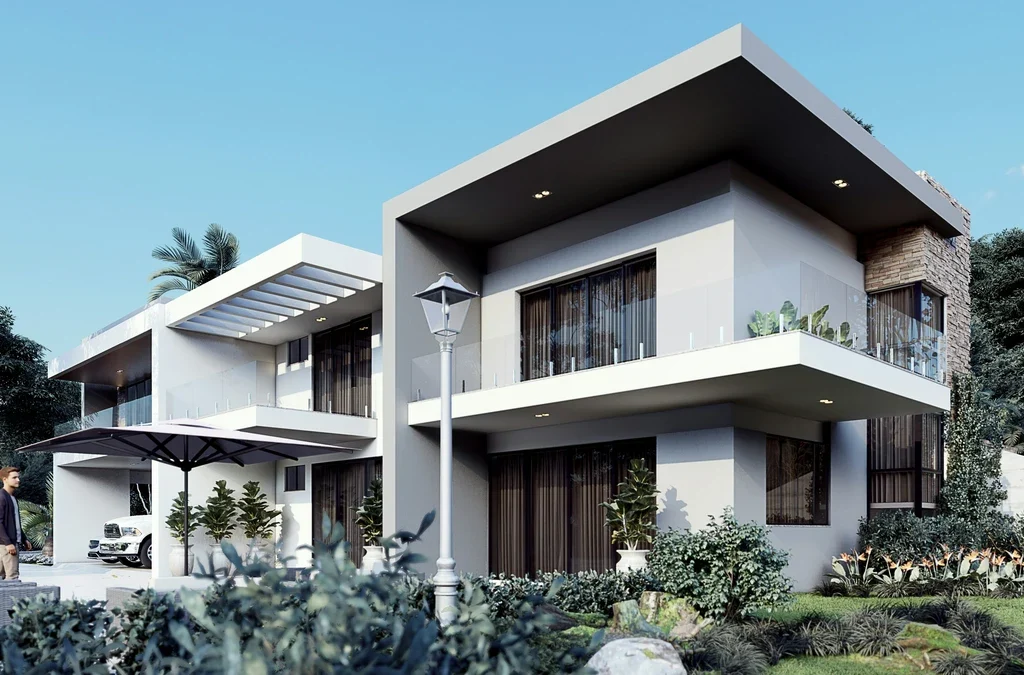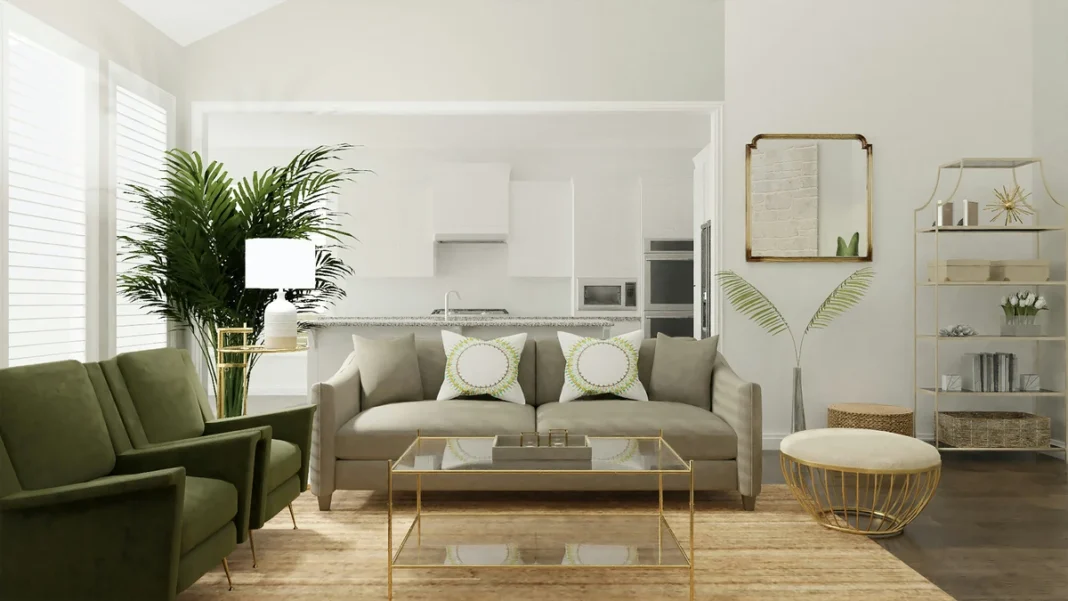Introduction: Crafting Your Dream Retirement Home
Retirement is a milestone that opens the door to new possibilities, including the chance to live in a home tailored to your lifestyle and needs. Whether you’re dreaming of a cozy, low-maintenance retreat or a spacious haven for hosting family, the right retirement home design can make all the difference. With thoughtful planning, you can find inspiring retirement home designs that fit any budget—without sacrificing comfort or style. In this comprehensive guide, we’ll explore five unique retirement home designs, from budget-friendly to luxurious, that cater to diverse preferences and financial plans. Let’s dive into creating a space where your golden years shine.
Why Retirement Home Design Matters
Retirement homes aren’t just about downsizing—they’re about optimizing. A well-designed home enhances accessibility, comfort, and enjoyment while aligning with your financial goals. According to the National Association of Home Builders, 78% of retirees prioritize single-level living for ease of movement, and 65% seek energy-efficient designs to reduce costs. The right design balances aesthetics, functionality, and affordability, ensuring your home supports your lifestyle for years to come. Whether you’re budget-conscious or ready to splurge, these five inspiring retirement home designs offer something for everyone.
Key Considerations for Retirement Home Designs
Before exploring specific designs, let’s highlight essential factors to keep in mind:
- Accessibility: Wide doorways, no-step entries, and single-story layouts improve mobility.
- Low Maintenance: Durable materials and smart systems reduce upkeep.
- Energy Efficiency: Solar panels, insulation, and smart thermostats cut utility bills.
- Community: Proximity to healthcare, social hubs, or family enhances quality of life.
- Budget: Aligning design with financial resources ensures long-term affordability.
These principles guide our exploration of the following retirement home designs.
1. The Affordable Prefab Retreat
What Is a Prefab Retirement Home?
Prefabricated homes, built off-site and assembled quickly, are a budget-friendly option for retirees. These homes cost $50,000–$150,000, depending on size and customization, making them ideal for modest budgets. Modern prefabs combine sleek design with practicality, offering open layouts and energy-efficient features.
Why It’s Inspiring
Prefab homes are customizable, eco-friendly, and quick to build—often completed in weeks. They’re perfect for retirees seeking affordability without compromising style. For example, companies like Stillwater Dwellings offer modular designs with floor-to-ceiling windows, creating bright, airy spaces.
Design Features
- Compact Layouts: 800–1,200 sq. ft. with open-plan living areas.
- Accessibility: No-step entries and wide hallways for mobility.
- Sustainability: Solar-ready roofs and high-efficiency insulation.
- Customization: Choose finishes, layouts, and add-ons like patios.
Budget Breakdown
- Base Cost: $50,000–$100,000 for a 1–2 bedroom prefab.
- Land: $10,000–$50,000 for a small lot in rural areas.
- Upgrades: $5,000–$20,000 for premium finishes or accessibility features.
Pros and Cons
- Pros: Affordable, fast construction, eco-friendly.
- Cons: Limited customization compared to traditional builds; may require land purchase.
Real-World Example
Jane, a 67-year-old retiree, built a 900 sq. ft. prefab in rural Oregon for $85,000. With a single-level layout and a small garden, her home is low-maintenance and energy-efficient, leaving her more time and money to travel.
2. The Cozy Cottage Haven
Embracing Simplicity with Style
Cottage-style homes, typically 1,000–1,500 sq. ft., offer charm and functionality for retirees on a moderate budget ($150,000–$300,000). These homes evoke warmth with features like wraparound porches and pitched roofs, ideal for those seeking a quaint, community-oriented lifestyle.
Why It’s Inspiring
Cottages blend nostalgia with modern convenience, offering cozy spaces perfect for downsizing. They’re often located in walkable neighborhoods or retirement communities, fostering social connections. As we discussed earlier, community is key for retiree well-being.
Design Features
- Single-Story Layout: Eliminates stairs for safety.
- Outdoor Spaces: Porches or patios for relaxation.
- Efficient Kitchens: Compact yet functional for easy meal prep.
- Natural Light: Large windows to brighten small spaces.
Budget Breakdown
- Construction: $100,000–$200,000 for a custom or semi-custom cottage.
- Land: $20,000–$80,000, depending on location.
- Upgrades: $10,000–$30,000 for smart home features or premium materials.
Pros and Cons
- Pros: Charming aesthetic, low maintenance, community-friendly.
- Cons: Smaller square footage may feel limiting for some.
Real-World Example
Tom and Linda, both 70, chose a 1,200 sq. ft. cottage in a North Carolina retirement community for $220,000. Their home’s open layout and nearby amenities, like a community center, make it easy to stay active and connected.
3. The Modern Minimalist Bungalow
Sleek and Low-Maintenance Living
Bungalows, ranging from 1,200–2,000 sq. ft., are a mid-range option ($200,000–$400,000) blending modern design with practicality. Their clean lines and open spaces appeal to retirees who value simplicity and efficiency.
Why It’s Inspiring
Modern bungalows prioritize functionality with stylish, clutter-free designs. They’re built for aging in place, with features like grab bars and smart home technology. Their versatility suits urban or suburban settings, aligning with the accessibility needs we covered earlier.
Design Features
- Open Floor Plans: Seamless flow between living, dining, and kitchen areas.
- Smart Technology: Voice-activated lighting and thermostats.
- Low-Maintenance Exteriors: Brick or vinyl siding for durability.
- Universal Design: Lever handles, non-slip flooring, and wide doorways.
Budget Breakdown
- Construction: $150,000–$300,000 for a custom bungalow.
- Land: $30,000–$100,000, depending on urban vs. rural.
- Upgrades: $15,000–$50,000 for smart systems or luxury finishes.
Pros and Cons
- Pros: Stylish, accessible, low upkeep.
- Cons: Higher cost than prefabs or cottages; may require more land.
Real-World Example
Susan, 65, built a 1,500 sq. ft. bungalow in Arizona for $280,000. With solar panels and a smart thermostat, her utility bills are under $50/month, freeing up funds for hobbies like painting.
4. The Multigenerational Family Home

Space for Connection and Care
Multigenerational homes, typically 2,000–3,500 sq. ft., cost $300,000–$600,000 and are designed for retirees who want to live near family. These homes include separate living spaces, like in-law suites, for privacy and togetherness.
Why It’s Inspiring
These homes foster family bonds while maintaining independence. With 35% of retirees living with or near family (AARP), multigenerational designs meet a growing need. They combine accessibility with ample space, making them ideal for hosting grandchildren or caregivers.
Design Features
- In-Law Suites: Separate entrances, kitchens, and bathrooms.
- Shared Spaces: Large kitchens and living areas for family gatherings.
- Accessibility: Elevators or stairlifts for multi-story designs.
- Outdoor Areas: Gardens or decks for family activities.
Budget Breakdown
- Construction: $250,000–$500,000 for a custom home.
- Land: $50,000–$150,000, depending on size and location.
- Upgrades: $20,000–$100,000 for suites or accessibility features.
Pros and Cons
- Pros: Family-oriented, flexible, future-proof.
- Cons: Higher cost, complex design process.
Real-World Example
Maria and Carlos, both 72, built a 2,800 sq. ft. home in Texas for $450,000, including an in-law suite for their daughter’s family. The shared backyard and open kitchen make family gatherings a breeze.
5. The Luxury Retirement Estate
Indulgence Without Compromise
For retirees with larger budgets ($600,000–$1M+), luxury estates offer 3,000+ sq. ft. of high-end living. These homes combine elegance with cutting-edge features, perfect for those who want to splurge on their dream retirement.
Why It’s Inspiring
Luxury estates provide unmatched comfort and sophistication, from spa-like bathrooms to smart home systems. They’re designed for entertaining and relaxation, with premium materials that require minimal upkeep, aligning with the low-maintenance needs discussed earlier.
Design Features
- High-End Finishes: Marble countertops, hardwood floors, and custom cabinetry.
- Smart Systems: Integrated security, lighting, and climate control.
- Wellness Spaces: Home gyms, saunas, or meditation rooms.
- Outdoor Oasis: Pools, landscaped gardens, or outdoor kitchens.
Budget Breakdown
- Construction: $500,000–$1M+ for a custom estate.
- Land: $100,000–$300,000 for premium lots.
- Upgrades: $50,000–$200,000 for luxury features like pools or home theaters.
Pros and Cons
- Pros: Unparalleled luxury, future-proof design, high resale value.
- Cons: High cost, longer build times.
Real-World Example
Robert, 68, built a 4,000 sq. ft. estate in Florida for $850,000. With a home theater and infinity pool, his home is a hub for entertaining friends and family, reflecting his vibrant retirement lifestyle.
To see full guide on House designing visit :
How to Choose the Right Retirement Home Design
Selecting among these five inspiring retirement home designs depends on your priorities:
- Budget: Prefabs and cottages suit tight budgets; estates are for splurging.
- Lifestyle: Minimalists may prefer bungalows, while family-focused retirees choose multigenerational homes.
- Location: Urban settings favor bungalows; rural areas suit prefabs or cottages.
- Future Needs: Prioritize accessibility and low maintenance for long-term comfort.
Consulting with architects or builders, like those from the National Association of Home Builders, can help refine your vision. Consider visiting model homes or retirement communities to see designs in action.
Financing Your Retirement Home
Funding your dream home requires planning. Options include:
- Savings: Use retirement funds or investments.
- Reverse Mortgages: Access home equity without monthly payments.
- Downsizing: Sell a larger home to fund a smaller, efficient design.
- Loans: Low-interest home loans for retirees with strong credit.
Speak with a financial advisor to explore options like those offered by Fidelity or Vanguard. Local zoning laws and HOA rules may also impact costs, so research early.
Conclusion: Start Planning Your Retirement Home Today
Your retirement home is more than a place to live—it’s a foundation for your next chapter. From affordable prefabs to luxurious estates, these five inspiring retirement home designs offer options for every budget and lifestyle. By prioritizing accessibility, efficiency, and personal style, you can create a space that enhances your golden years. Start by assessing your needs, exploring designs, and consulting professionals to bring your vision to life.
To get more information about personal finance visit :
Call to Action: Ready to design your dream retirement home? Contact a local architect or builder today to explore these inspiring designs. Share your favorite design in the comments or connect with us for more retirement planning tips!
FAQ: Your Questions About Retirement Home Designs Answered
What are the best retirement home designs for small budgets?
Affordable prefabs and cozy cottages, costing $50,000–$300,000, offer low-maintenance, accessible layouts ideal for retirees on a budget.
How can I make my retirement home accessible?
Incorporate wide doorways, no-step entries, lever handles, and single-story layouts. Universal design features ensure long-term comfort.
Are multigenerational homes a good choice for retirees?
Yes, they provide space for family while maintaining privacy through in-law suites, fostering connection and support.
What makes a retirement home energy-efficient?
Solar panels, high-efficiency insulation, smart thermostats, and LED lighting reduce utility costs and environmental impact.
How do I start planning my retirement home?
Assess your budget, lifestyle, and future needs. Consult architects, visit model homes, and explore financing options like reverse mortgages.


